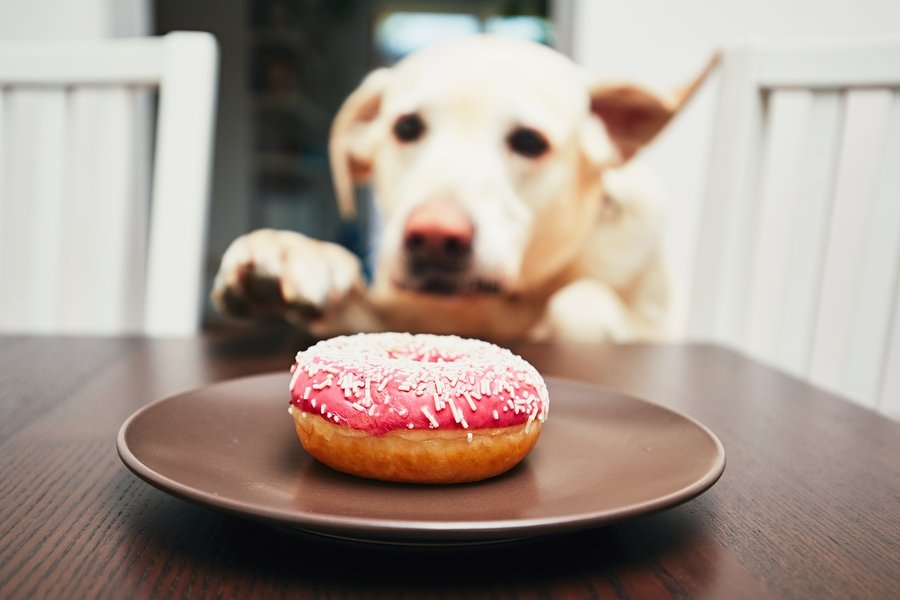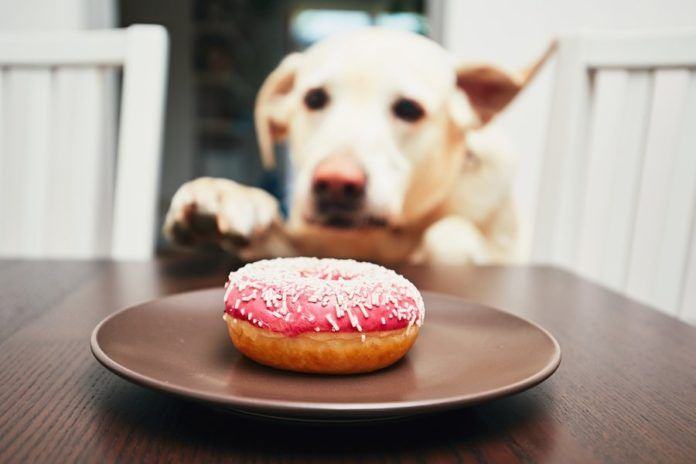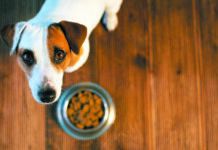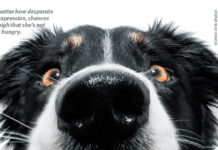

Once your dog grows out of puppyhood, most veterinary visits include scant to no discussion of diet. Sometimes, however, something is wrong that would lead either you or your dog’s doctor to prompt conversation about what your pet is eating. Or your dog’s primary care vet may refer you to a veterinarian who is board-certified in nutrition because she discovers or suspects your dog has a health issue that requires dietary intervention overseen by an expert in the field. Or you on your own decide to go to see a board-certified veterinary nutritionist simply because you’re concerned that what your dog eats might be affecting his overall health.
And health most definitely can be affected by a dog’s diet — in very serious ways. For instance, the board-certified veterinary nutritionists at Tufts Clinical Nutrition service have seen:
- Dogs with nutrient imbalances severe enough to cause bone fractures.
- Dogs with nutrient imbalances severe enough to cause seizures.
- Dogs with nutrient deficiencies — or toxicities — caused by feeding them diets made by small companies with minimal quality control.
- Dogs at risk of illness because they were being fed raw food diets contaminated with dangerous bacteria, like Salmonella and Listeria.
- Dogs whose heart disease symptoms were made worse by high-sodium diets thought to be lower in sodium than what the dog had been eating.
- Dogs whose kidney disease was made worse with foods that contained ingredients that exacerbate that illness.
And these are only some of the things that can go wrong because of the dietary makeup. The thing is, when people provide the doctor with their dog’s dietary history, they often leave out important details, which makes it harder to get to the root of any potential problem.
What the Tufts veterinarians who are board-certified in nutrition are often told when they ask clients what their dog eats is information strictly about the pet food itself rather than the pet food and all the treats the pet is fed on the side. And they are not told about the dog’s commercial diet with enough specificity. “It’s grain-free” or “it contains high-quality ingredients” doesn’t give the veterinary nutritionist the information she needs to link the diet to any possible health problems. Neither does, “I make it myself, and all the ingredients are ‘organic,’ or ‘free-range.'”
But only complete information can help them make a determination about whether a dog’s diet is nutritionally complete and balanced and, if it is not, whether it is contributing to a pet’s compromised health. They have to be able to figure out, for instance, whether a dog is getting more than 10 percent of his calories from treats, table food, or rawhides. Ten percent is a benchmark. Anything above that, and even a very fine, balanced pet food may not do the trick. The extras are “diluting” the good nutrition that went into the bag or can.
Sometimes, a lapse in precise information can even “miss” a dog whose nutrition problems are so severe that he needs to be hospitalized. Herewith, the information you need to give, and how you need to give it.
The 8 pieces of dietary information to provide
- Not just the brand but also the individual product and flavor. Ingredients and nutrient levels can differ even between flavors from the same line. The vet needs to be able to look up the nutrients in the exact food you’re feeding your dog. Copy the full name from the label, or take a photo and bring that with you to the appointment.
- The exactrecipe of a homemade diet. If you don’t buy your dog’s meals in bags or cans but make them in your kitchen, you have to give the specifics of the recipe in the same detail the veterinarian would need to prepare the food herself in her own kitchen.
- Treats. Dog treats sometimes make up a very large percentage of a dog’s total calories, in no small part because many commercial treats are quite high in calories. As with the diet itself, the veterinarian will require not only the brand and amount but also the specific product and flavor.
- Table food. This one is a bit tricky because many dogs get table food, but the exact foods and the amounts will differ from day to day. As best as possible, write down all the different people food you give your dog and note how much you give and how often. It wouldn’t be a bad idea to keep a dog diet log for a week to see how things really play out; it could be a lot different from what you remember.
- Rawhides and similar items. Such items can pack quite a lot of calories. Plain rawhide contains about 80 calories an ounce — between 5 and 10 percent of the calories a 40- to 50-pound dog should eat daily. Items in the same category include bully sticks (which are the penises of bulls), hooves, and ears.
- Dental products. You might give your dog dental chews to help clean your dog’s teeth, but these chews and other dental treats — including toothpaste, which dogs swallow — should be included when tallying what your pet eats each day. Purina DentalLife chews, for instance, contain 63 calories each.
- Dietary supplements. Supplements are not so much an issue calorie-wise, but they can cause nutrition issues because they are not regulated by the federal government; that is, their quality cannot always be guaranteed. Or they can be given at doses that lead to serious nutrient imbalances. Giving a dog multiple supplements can cause some nutrients to build to toxic levels in a dog’s body. A veterinary nutritionist can sometimes get to the bottom of a problem by sorting through all the vitamins, minerals, and other things a dog might be taking in with supplements.
- Foods used to helpmedicine go down easier. Does your dog take medicine that you wrap in cheese or cold cuts? Do you put a pill in apple sauce for your pet? Dogs who take pills on a consistent basis and are administered those pills with food are getting calories and other nutrients every day that need to be accounted for. If a dog is supposed to be on a low-sodium diet because of heart disease or kidney failure and you wrap his medicine in cheese with a high sodium content, you could be negating, or at least lessening, the effects of the drug.
An easy way to collect all this information for your dog’s visit with a veterinary nutritionist is to fill out the World Small Animal Veterinary Association’s diet history form. It will put all the details in one place.





